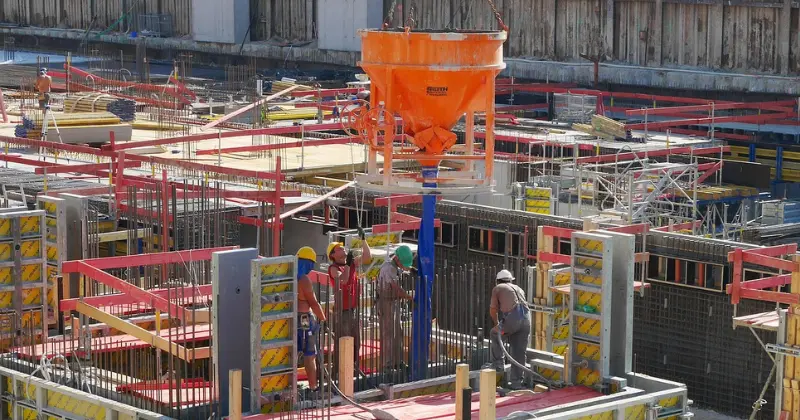10 mins read
Exploring The Depths: Underwater Buildings & Their Construction
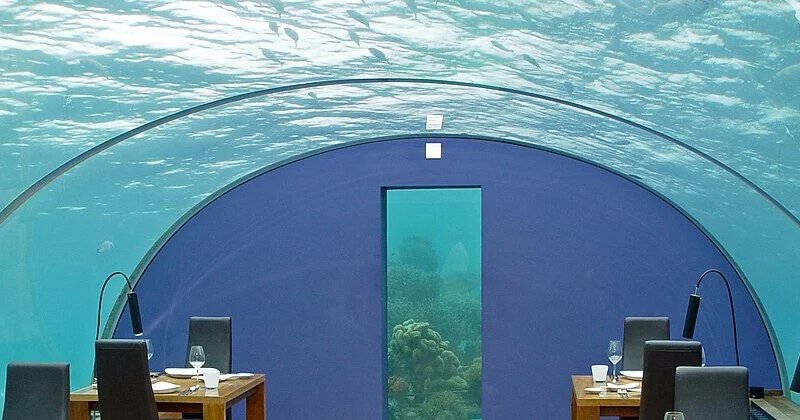
Underwater building is not a modern concept. Even since prehistoric times, real estate has not been limited to land – people have innovated to build homes and other structures in, on and around water for as long as need existed. Demand has simply pushed its potential to the forefront.
Fancy a snooze in an underwater house or hotel? Breakthroughs in digital construction technology ensure that underwater structures are not only viable for human habitation but also sensitive to environmental impact.
Diving deep into the wonderworld of underwater construction, we explore some of its most amazing and unique engineering feats, glistening just beneath water’s edge.
The Unique World of Underwater Construction
This specialized field of engineering and construction covers a range of projects that include building pipelines, offshore platforms, tunnels, and marine ecosystems. While it shares core engineering principles with land-based construction, building underwater comes with a unique set of challenges:
- different environmental and elemental forces
- durability of building materials
- compromised visibility underwater
- poor communication flow underwater
- higher cost of specialized equipment and safety requirements
- marine ecological impact
None of that stopped the ancient Greeks, Romans, and Egyptians from building harbors, dams, and bridges in and around bodies – there’s evidence dating way back of their using underwater masonry, underwater foundations, and cofferdams.
From late 19th to early 20th centuries, diving technology and underwater welding techniques advanced to evolve modern underwater construction. When technology like underwater robotics and remotely operated vehicles broke through, it completely changed the architectural, engineering and contractor (AEC) industry – more effective and ecologically friendly methods opened the door to building underwater houses that are, well, safe as houses.
How are Underwater Structures Built?
Underwater building presents a fascinating intersection of engineering ingenuity and environmental challenge. Let’s explore the techniques being utilized:
▷ Caissons
Caissons are prefab concrete or steel structures built onshore, then moved to the intended location. Once positioned, they are filled with concrete and gradually descended underwater to provide a strong anchor to the seabed. They provide a stable foundation for coastal buildings like bridges and piers in regions with soft or unstable soil, essentially creating a massive, watertight chamber, and setting the groundwork for a new building.
▷ Cofferdams
Where it’s not safe or feasible to work underwater – like building bridges over water bodies – cofferdams provide a controlled environment for construction workers, securing on-site safety and creating conditions conducive to quality work. They establish a dry work site inside a body of water, created by a waterproof enclosure with sheet piles pushed into the seabed. Construction can begin inside the dry space once the enclosure is sealed and water is pumped out.
▷ Driven Piles
Driven piles are thin columns composed of steel, concrete, or wood that are driven into the seafloor by vibratory or hydraulic drivers. When securely anchored to the seabed, they provide foundational support for piers, offshore platforms, and bridges. In locations with soft or unstable soils, where conventional foundation techniques are inadequate, driven piles are a useful and affordable option for underwater projects as they are reasonably quick and easy to install.
▷ Off-site Building, Float, and Lower
The off-site building, float, and lower methodology involves building large components of a structure onshore and transporting them to the construction site by via floating vessels. Arriving on-site, the components are then safely lowered into position by cranes. This minimizes the amount of work to do underwater, reducing expense, construction safety hazards, and environmental impact. The process is useful for marine infrastructure, offshore platforms, and pipeline projects.
15 Underwater Buildings You Won’t Believe Exist
If it weren’t for the clever techniques, we wouldn’t have seen these awe-inspiring underwater buildings develop over the past few decades. It’s the stuff of fantasy but they really do exist! We made a list:
1. The World, Dubai, UAE
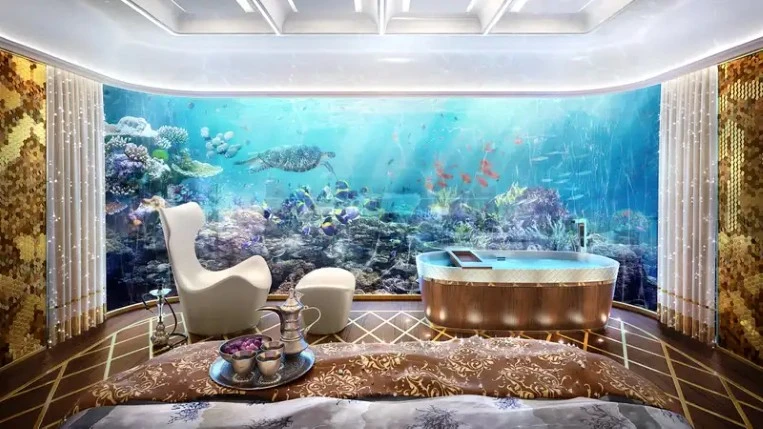
The first of these half-floating, half-underwater, ultra-luxurious homes went on sale 10 years ago with over 200 designers, engineers, and architects from 25 countries working to bring the project to life. Models are equipped with state-of-the-art technology like smart home automation and climate control. The Floating Seahorse is an experiment in lavish living, with the dual purpose of restoring the endangered local seahorse population. Units comprise 900 square feet of living space plus 600 square feet outside for a garden, not counting the coral garden and vast underwater views.
2. H2ome, Global
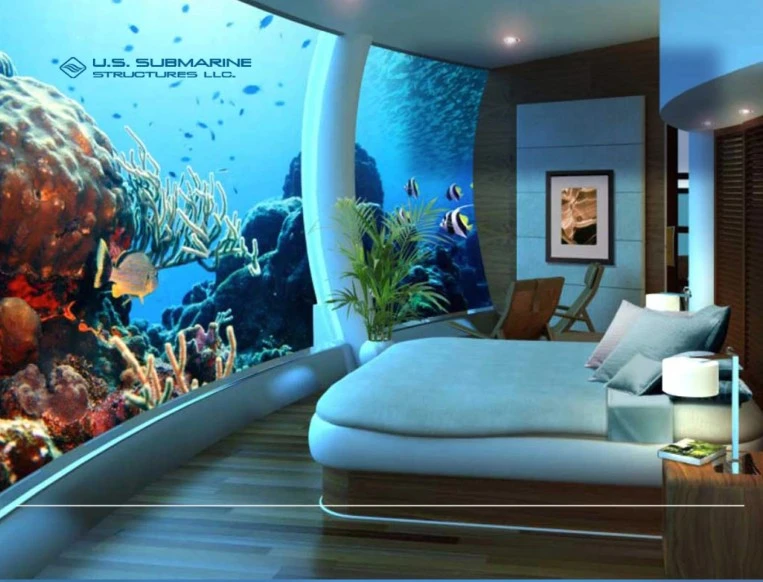
H2ome underwater houses are prefabricated aquatic pads, particularly suited to lagoons, shallow seas, and lakes. A unit features 2 levels with 2 bedrooms, 2 bathrooms, a lounge, kitchen, and other living areas – quite a spacious dwelling with 3,600 square feet of 5-star luxury. The designers, US Submarine Structures, offer landscaping around the underwater house, including coral beds planted to attract marine life to closer viewing proximity.
3. The Muraka, Rangali Island, Maldives

The Muraka features underwater living as a unique, otherworldly vacation experience. It’s the world’s first underwater villa, located 16 feet below sea level, built from steel, concrete and acrylic, and designed for minimal impact on the marine ecosystem. Its lower level was built in Singapore before being moved to the Maldives by ship, then gently submerged to avoid damaging the delicate coral reef. Ten concrete piles hold the structure in place, withstanding whatever conditions the ocean whips up. Guests are treated to unfettered views of the reef and its abundant natural life – and fall asleep counting sea turtles instead of sheep.
4. Coral Greenhouse, Great Barrier Reef, Australia
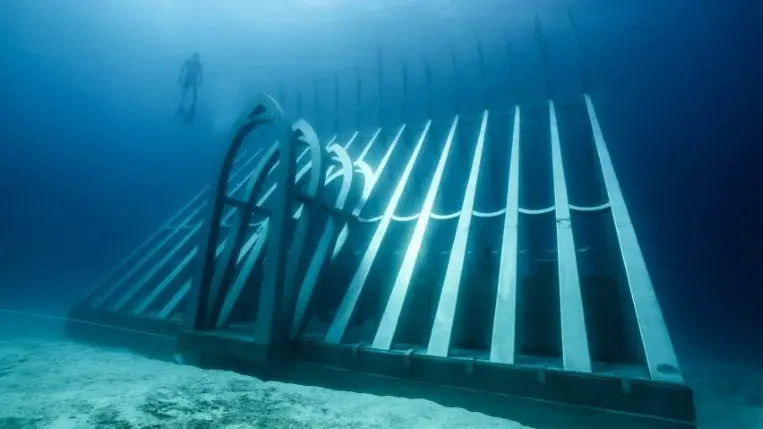
The Coral Greenhouse is positioned in an inlet of the reef, filled with sculptures as part of the Museum of Underwater Art, combining engineering ingenuity with natural beauty and art. It’s meant to raise awareness of the threats to the Great Barrier Reef. Its concrete and steel structure features a 165-tonne skeleton anchored to the seabed by a heavy base and integrated cyclone tethers to protect it during storms. It has a low centre of gravity with spire-shaped elements attached with zinc anodes to the apex of the roof that oscillate with the movement of the water. Its biomorphic design opens itself up to colonization by sea life. Water fills the space between its ribs, offering hiding places for octopuses, sea urchins, and small fish escaping predators.
5. Manta Resort, Pemba Island, Tanzania

Manta Resort was constructed off-site before being towed and anchored into place off the Tanzania coast. The living area is in the top part of the floating platform. The bedroom is in the bottom section, which is suspended beneath the waves as an undersea suite. Guests enjoy the best of both worlds with tropical sun above and sprawling Indian Ocean views below.
6. Atlantis Hotel, The Palm, Dubai
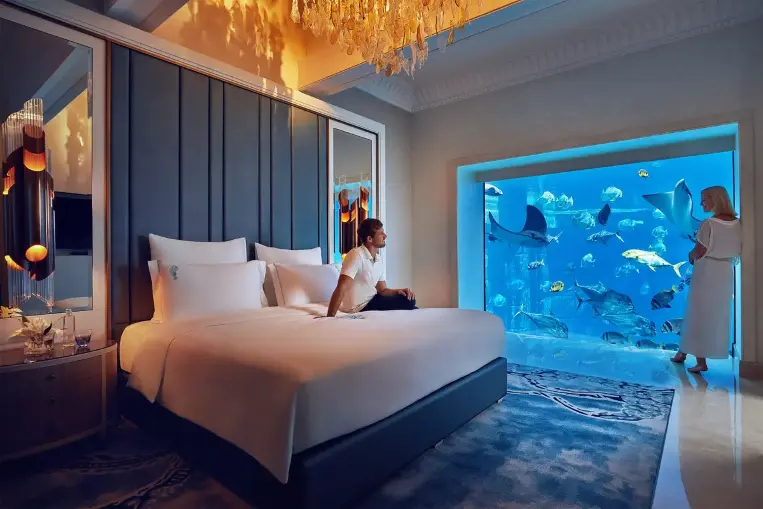
The Atlantis Hotel in The Palm ranks as one of the most impressive of Dubai’s renowned architectural feats. It features suites both above and below sea level with an elevator that descends to the underwater suites. The structure may have been built using cofferdams, creating underwater suites 20 feet below sea level that offer stunning wrap-around views of the Gulf’s marine life.
7. Jules Undersea Lodge, Key Largo, Florida
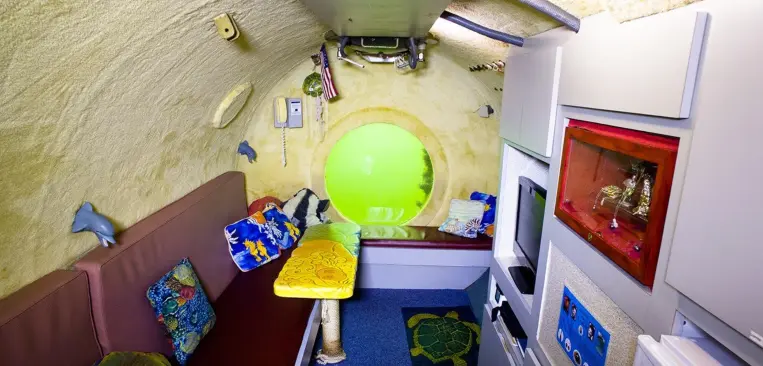
So far, the only underwater hotel in the United States, Jules Undersea Lodge started as a research laboratory, built in the early 1970s. This amazing piece of architecture is entirely submerged and is the oldest of its kind. To ensure it doesn’t flood, the lodge is filled with compressed air. Its entrance is a pool connected by a wet room – it can only be reached by diving! Guests are offered scuba diving lessons, culminating in an unconventional, once-in-a-lifetime experience of activities and views.
8. Subsix, Niyama Island, Maldives
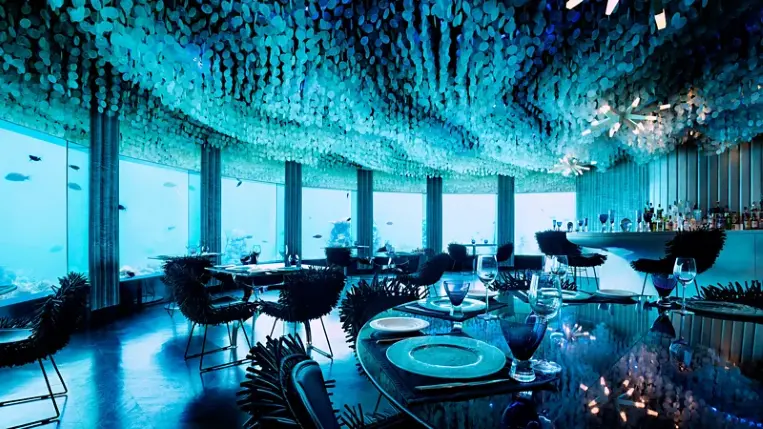
Now, to dancing with the starfish: it’s the world’s first and only underwater nightclub! The structure of the Subsix nightclub was built off-site and then lowered into place. Its complex construction gives way to a stunning piece of architecture, where guests can enjoy a night of socializing and underwater ambience. Its offshore location means the club can only be accessed by boat for an added touch of exclusivity.
9. The Transbay Tube, between San Francisco and Oakland, California
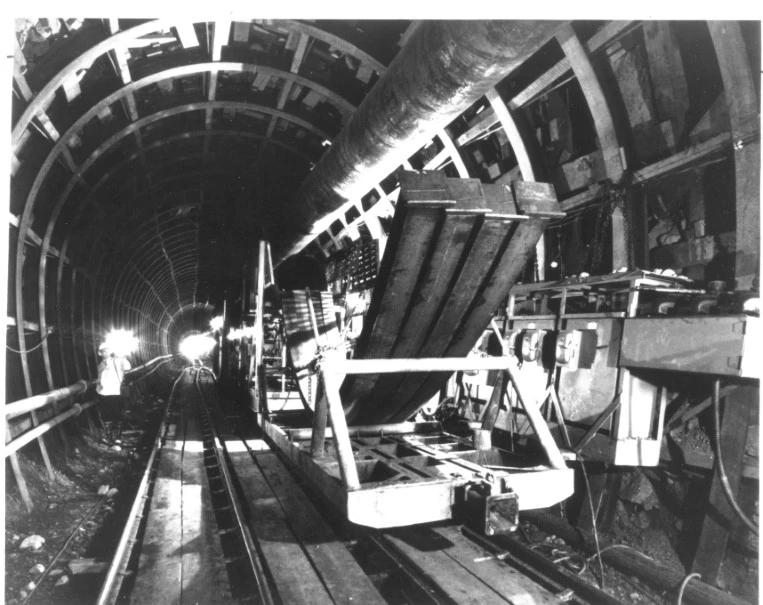
Underwater construction extends to infrastructure too with the Transbay Tube linking San Francisco and Oakland as a great example. This underwater rail tunnel was built in 1974 using the immersed tunnel technique. Contractors built its components off-site and transported them by barge to where they needed to be positioned. Each component was then lowered into place and divers were sent down 135 feet below sea level to connect them.
10. Ithaa Undersea Restaurant, Maldives
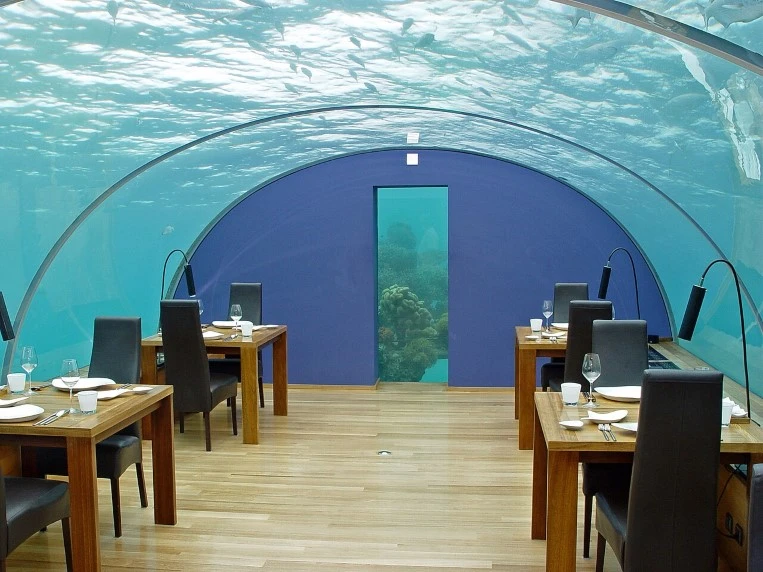
Does seafood tastes better at the source (or inside it)? Ithaa Undersea Restaurant provides an indulgent setting to find out. The restaurant structure was built off-site and then lowered from a barge onto its foundations. Access to the undersea restaurant is through a shaft on the surface of the water. With limited seating, guests are afforded an exclusive, intimate setting with panoramic views of the Maldivian marine world.
11. The Underwater Restaurant, Norway

From the tropics to the icy chill at The Underwater Restaurant, commonly referred to as simply “Under”. Its claim to fame is its unmatched views of the surrounding North Atlantic marine life and seafloor, courtesy of the restaurant’s panoramic acrylic glass, designed by Snøhetta. It is located at the southernmost point of Norway’s untamed coastline where it offers patrons an unparalleled culinary encounter.
12. The Intercontinental Shanghai Wonderland, China
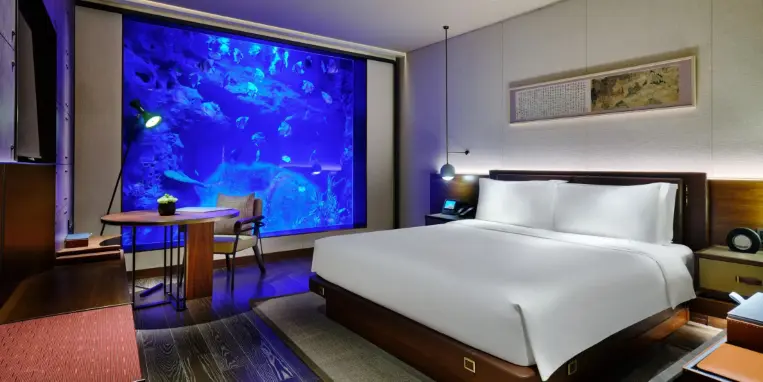
Partly submerged in an aquarium that used to be a quarry is the Intercontinental Shanghai Wonderland hotel, a five-star property located in Songjiang. The building is only partially submerged, but the aquatic environment surrounding its restaurant and aqua rooms provide an immersive experience with breathtaking views of the aquarium.
13. The Cancun Underwater Museum, Mexico
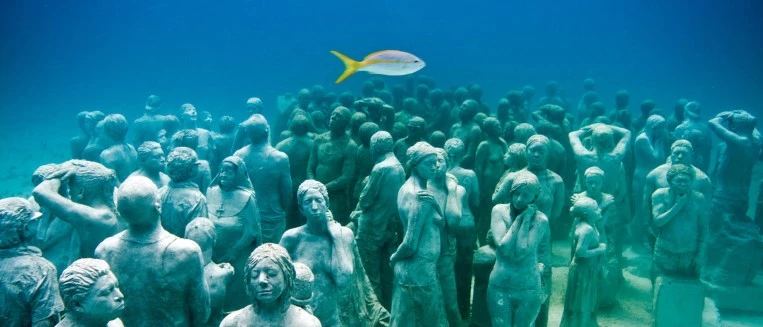
The Cancun Underwater Museum is giving us bucket list vibes with its more than 500 life-size sculptures submerged in the balmy Caribbean. These sculptures are more than art; they function as man-made reefs, drawing in marine life and offering a home for coral and other creatures. Visitors can view the museum’s art exhibits and marine ecosystem on a snorkeling or diving trip.
14. Atlantis Sanya Resort, China
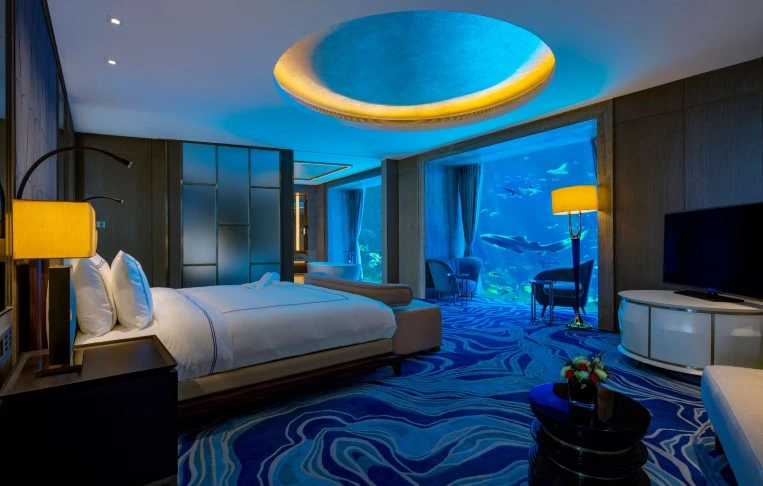
The architecture of Atlantis Sanya Resort was inspired by the lost city of Atlantis. Among the resort’s contemporary accommodations is the iconic Neptune Underwater Suite, whose bedroom window looks out onto the stunning underwater world. There is also an aquarium on the premise with over 86,000 marine creatures.
15. The Ossiano, Dubai
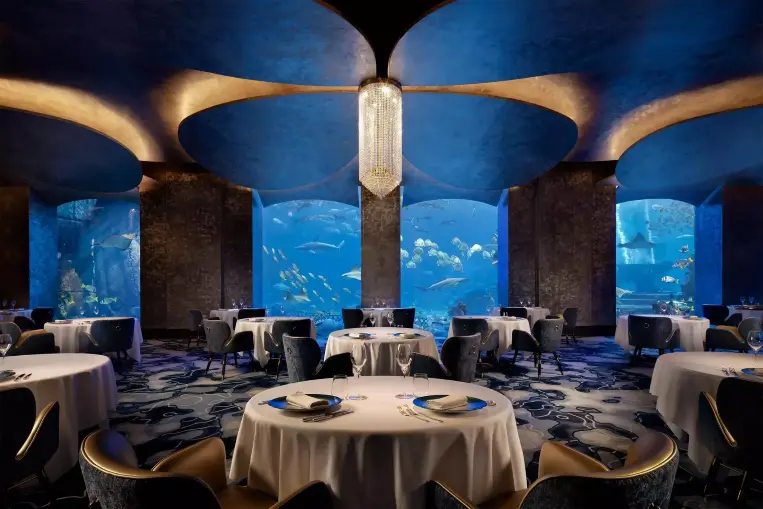
We close our list of top underwater buildings on a tasty note with Ossiano, an iconic restaurant known for its delicious seafood dishes and captivating underwater setting. The restaurant is located beneath the waves of the Ambassador Lagoon at Atlantis, The Palm resort. The resort features an aquarium, housing more than 65,000 creatures – diners at the restaurant enjoy panoramic views of all this splendid marine life.
The Future of Construction: Underwater Houses
Plenty of examples worldwide of floating homes offer a contemporary perspective on waterfront living. As for underwater builds, existing structures are more likely to be luxury residences and used as eco-tourism or research facilities. However, climate change, rising sea levels, urbanization, population expansion, and urban overcrowding are coinciding with the increasing scarcity of land for housing. It’s the reason that underwater building is gaining traction among the AEC industry and environmentalists.
Innovations in robotics, the use of advanced, anti-corrosive materials, low-impact dredging, and underwater communication seek to overcome the physical barriers to building underwater. Modular construction, waste recycling, 3D printing and eco-conscious design are just some of the progressive technologies available.
While the idea of living in an underwater house is still fantastical to most and underwater building can be unpredictable and challenging, there are some visionary concepts bringing the underwater cities of the future closer to the present, including:
- Ocean Spiral – brainchild of the Shimizu Corporation, projected to become reality by 2030. The project envisages a self-sufficient metropolis of underwater homes for thousands of residents at between 1,500 and 4,000 meters below sea level.
- Aequorea – an underwater village off the coast of Rio de Janeiro, it is designed to house up to 20,000 residents upon completion. Sustainability and ecological principles are deeply embedded in the project as it is constructed from 3D-printed plastic waste.
Conclusion
It might still feel like underwater homes are a prospect for the future, but with all the innovation that has already been done, we can expect to see more amazing projects breaking ground, or water, as it were.
From hospitality to recreation to infrastructure to underwater housing, the AEC industry has answers to the demand growing out of land scarcity and sustainability concerns. The technology to secure safe building conditions and produce quality builds already exists and continues to develop. Engineers, architects and contractors are learning how to work around the natural barriers and work with nature.
We are not so far from the underwater cities of the future!
Innovation in construction goes digital-first! RIB Software offers a specialized, professional toolkit with state-of-the-art solutions for better collaboration, productivity, construction cost estimation, document management, and more. If you’re ready to build better, book a demo of our products now.
Get My Free RIB Software Demo Now
Most Recent
10 mins read
11 mins read
11 mins read
10 mins read
Blog Categories

Ebook







